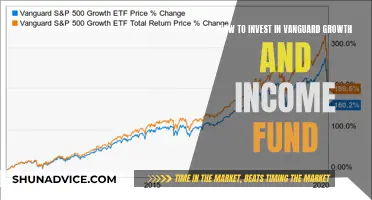
Parag Parikh Flexi Cap Fund is a mutual fund that has been in existence for over a decade. It aims to achieve long-term capital appreciation by investing primarily in equity and equity-related instruments. The fund offers both growth and dividend options, with the ability to invest through SIP or lump sum payments. With an expense ratio of around 0.63%, the fund has consistently outperformed its benchmark and peers since its launch. However, investors should be aware of the risks and volatility associated with this fund, as well as the recent underperformance due to corrections in international equities. While the fund has a history of recovering from short-term setbacks, it is important to consider other investment options and not allocate all your money to a single fund.
| Characteristics | Values |
|---|---|
| Risk | Very High |
| Investment Objective | To achieve long-term capital appreciation by investing primarily in equity and equity-related instruments |
| NAV | ₹86.4618 as of 24 October 2024 |
| AUM | ₹82,441 Crore as of 30 September 2024 |
| Returns | 37.38% in the last year |
| Expense Ratio | 0.63% |
| Exit Load | 2% if redeemed within 365 days, 1% if redeemed after 365 days but before 730 days |
| Minimum Investment | ₹1,000 |
| Fund Manager(s) | Raunak Onkar, Rajeev Thakkar, Raj Mehta |
| Fund House | PPFAS Mutual Fund |
What You'll Learn

How does Parag Parikh Flexi Cap Fund work?
The Parag Parikh Flexi Cap Fund is a diversified equity scheme that is suitable for investors who are looking for long-term capital growth. The fund has no self-imposed limitations in terms of sector, market capitalization, or geography, but on average, 65% of its corpus will be invested in listed Indian equities to benefit from favourable Capital Gains tax treatment. The fund's investment objective is to seek long-term capital growth from an actively managed portfolio of equity and equity-related securities.
The fund is managed by a team of fund managers, including Mr. Rajeev Thakkar, Mr. Rukun Tarachandani, and Raunak Onkar, who manage the domestic equity, foreign investment, and fixed-income components, respectively. The fund has a minimum application amount of ₹1,000 for new purchases, additional purchases, and monthly SIPs, with a minimum SIP amount of ₹3,000 for quarterly SIPs.
The Parag Parikh Flexi Cap Fund is considered a high-risk investment, and investors should be prepared for possible moderate losses. It is recommended for investors with a long-term investment horizon of at least 3-4 years. The fund has an exit load of 2% if redeemed within 365 days and 1% if redeemed after 365 days but before 730 days. The expense ratio of the fund is 0.63%.
In terms of performance, the fund has delivered average annual returns of around 20-21% since its inception in May 2013. The fund has an AUM of around ₹82,441-89,158 Crore as of September 2024. The latest NAV of the fund as of October 24, 2024, was ₹86.15-86.46.
The fund's top holdings include investments in Power Grid Corporation of India Ltd., Bajaj Holdings & Investment Ltd., Maruti Suzuki India Ltd., and HCL Technologies Ltd. The fund has a majority of its investments in the Financial, Services, Technology, Energy, and Automobile sectors.
You Invest: Exploring Mutual Fund Options
You may want to see also

What are the historical returns of Parag Parikh Flexi Cap Fund?
The Parag Parikh Flexi Cap Fund has delivered 21.04% returns since its inception 11 years and 3 months ago. The fund has generated a 16.6% annual return in 70% of cases for investors holding for at least 5 years.
The fund has delivered average annual returns of 20.79% since its inception. The Parag Parikh Flexi Cap Fund Direct-Growth scheme has delivered 37.38% returns in the last year. The fund has doubled the money invested in it every 4 years.
Aquabounty's Mutual Fund Investors: Who's Taking the Plunge?
You may want to see also

What are the ratings of Parag Parikh Flexi Cap Fund?
Parag Parikh Flexi Cap Fund has been rated as a 'Very High Risk' fund by Value Research. SEBI's Riskometer also rates the fund as 'Very High Risk'. The fund has no lock-in period. The fund has delivered average annual returns of 20.79% since its inception 11 years ago.
The fund has an expense ratio of 0.63%, which is close to what most other Flexi Cap funds charge. The fund has ₹82,441 Crore worth of assets under management (AUM) as of 30/09/2024 and is a medium-sized fund in its category.
The fund has generated a 16.6% annual return in 70% of instances for investors holding for at least 5 years. For every unit of risk, the fund generates 20% more in returns.
The fund has consistently outperformed its benchmark and peers since its launch in 2013. It has returned Rs 442 for every Rs 100 invested. The fund's rolling returns also show that it has consistently outperformed its benchmark.
The fund has a well-diversified portfolio and has demonstrated the capacity to deliver a favourable risk-adjusted return over the long term.
Best Vanguard Funds for Your First Investment
You may want to see also

What are the top holdings of Parag Parikh Flexi Cap Fund?
As of 31 July 2024, the Parag Parikh Flexi Cap Fund had invested 83.9% in equity, 15.33% in debt, and 0.77% in cash and cash equivalents.
The fund's top holdings include Power Grid Corporation of India Ltd., Bajaj Holdings & Investment Ltd., Maruti Suzuki India Ltd., and HCL Technologies Ltd.
The fund has the majority of its money invested in the financial, services, technology, energy, and automobile sectors.
Citadel Hedge Fund: A Guide to Investing with the Best
You may want to see also

What are the risks of investing in Parag Parikh Flexi Cap Fund?
When considering investing in the Parag Parikh Flexi Cap Fund, it is important to be aware of the associated risks. While the fund has consistently outperformed its benchmark and peers since its launch in 2013, there are still some risks to consider.
Firstly, the fund has a very high-risk rating according to SEBI's Riskometer. This means that investors need to be prepared for potential ups and downs in their investment value. As with all equity funds, it is recommended to invest only through the SIP route, and one should not invest in this or any other flexi-cap fund if the investment horizon is less than five years.
Secondly, the fund's performance is closely tied to the performance of the equity market. While the fund has demonstrated an ability to limit losses during market corrections, there is still a possibility of negative returns on investments. The standard deviation of the fund's returns indicates that its performance has been more volatile compared to similar funds in the market. This means that there is a higher chance of the fund's returns deviating from the expected value.
Thirdly, the fund has a significant investment in international equities, which can add a layer of complexity and risk due to exposure to global economic and geopolitical factors. Additionally, recent regulatory changes by SEBI have restricted Indian mutual funds from investing in stocks listed on overseas exchanges, which has adversely impacted the fund's performance.
Lastly, the fund's large size may make it challenging to place money in the mid and small-cap segments, potentially limiting its investment opportunities and flexibility.
In conclusion, while the Parag Parikh Flexi Cap Fund has a strong track record of outperforming its peers and providing market-beating returns, it is essential to carefully consider the risks outlined above before making any investment decisions. Diversifying one's investments across different funds and asset classes is always recommended to mitigate risks.
Amundi Funds: A Guide to Investing in Their Success
You may want to see also
Frequently asked questions
The fund aims to achieve long-term capital appreciation by primarily investing in equity and equity-related instruments.
The fund has a Very High-risk rating according to SEBI's Riskometer. It is suitable for investors who are comfortable with the possibility of moderate losses and are looking for high returns over a period of at least 3-4 years.
The fund has consistently outperformed its benchmark and peers since its launch in 2013. It has delivered average annual returns of around 20% and has doubled the money invested every four years. However, in the short term, the fund has been among the worst-performing Flexi Cap funds in 2022, primarily due to the correction in international equities and SEBI restrictions on investing in overseas stocks.







